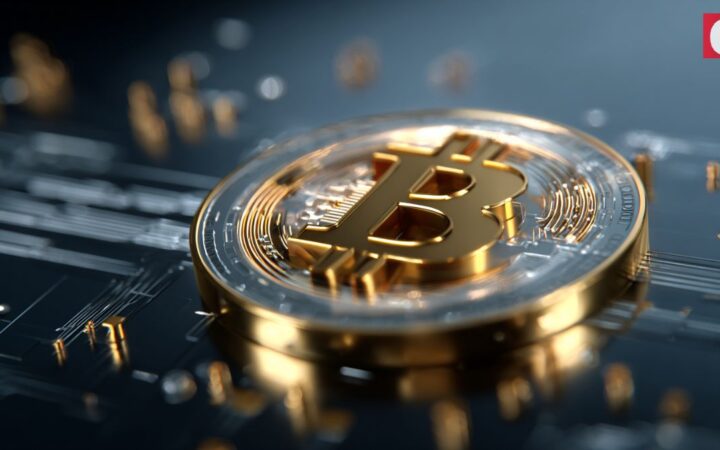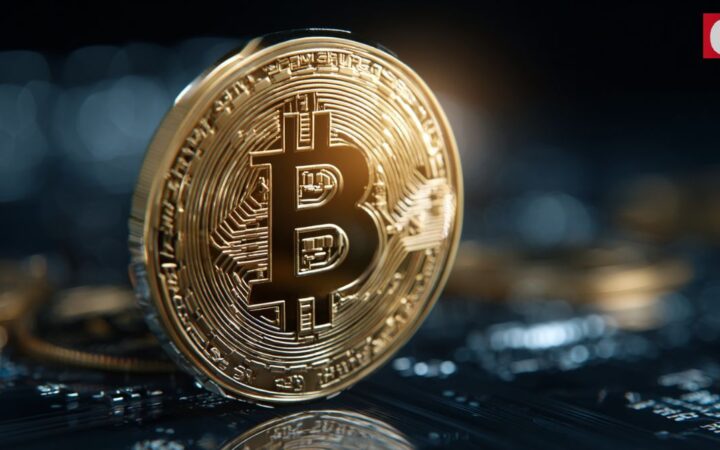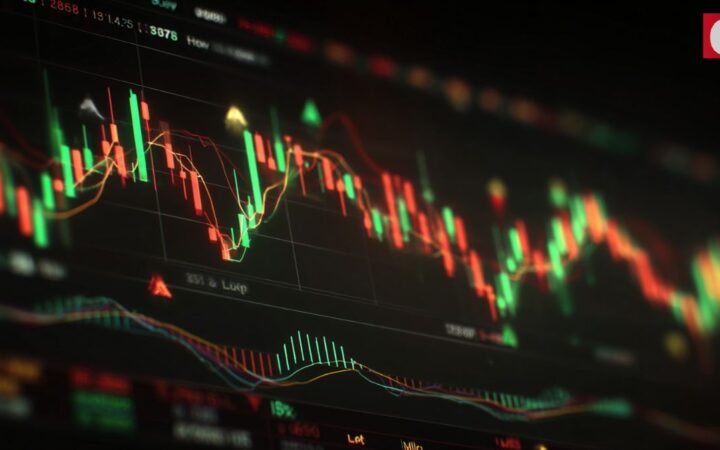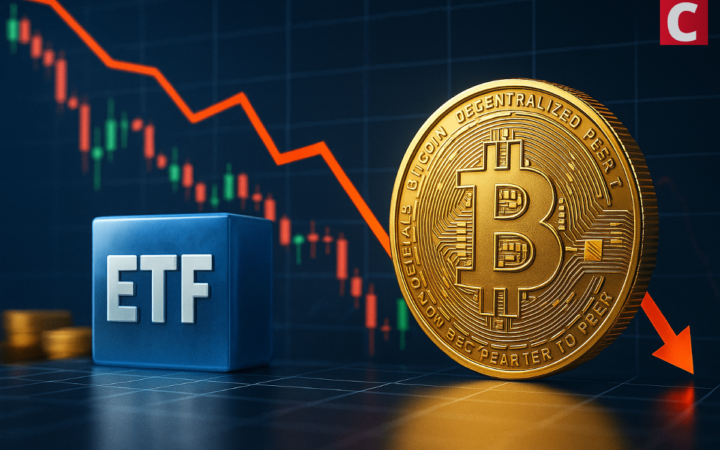In the previous article we considered closely the prospects of the bitcoin and its growth. In this one we will again take only the bitcoin as a representative of all cryptocurrencies as we assess their potential as a “safe haven” asset. The reasons are several:
- Long-term price statistics are only available for the bitcoin.
- Listed interest rates and any beginnings of derivatives also only exist for the bitcoin.
- Only the bitcoin, litecoin and a few others less known currencies operate on an infinite-growth model.
- Ethereum is not really a cryptocurrency at all because of its unlimited emission and the planned transfer to a PoS consensus protocol may restrict the value climb. Also as the etherium token becomes more expensive, many cryptoprojects on the Etherium platform may struggle to survive.
- The emission model of a number of popular cryptocurrencies does not imply a growth of the rate (Ripple) or may even imply a cheapening at the early stage (Z-cash).
All this means that not every cryptocurrency can serve as a “safe haven.” However everything we say below does apply to the litecoin, that digital “silver.”
IMPORTANCE OF A HAVEN IN THE COMING FINANCIAL CRISIS
The need for “safe haven” assets always makes itself felt as worries about a coming market crash accumulate. Years after the 2008-2009 world crisis various media and analysts still predict an end of the dollar and a collapse of the U.S. stock exchange, but a new crisis has not happened yet – instead there is exponential growth.
Such concerns are not unfounded, however. The EWADJ1.xlsx table shows data on the main American stock market index, Dow-Jones Industrial, since 1885, with a graph and wave analysis. All of the data comes from www.globalfinancialdata.com.
As we can see on 03.09.29 at the 381.17 mark a 3rd wave ran out, on 08.07.1932 at the 41.22 mark a 4th wave, since 1932 the market has been growing significantly as a 5th wave (nearly 22 000 points by now). The index’s fall by more than 9 times reflects the 1929 crisis and the start of the Great Depression.
Fast forward 88 years. No comparable corrections have happened. At the moment we are in a 5-5-5-5 wave, signifying a wrapping-up of a “super cycle” – and promising a catastrophic collapse.
The crash does not have to come tomorrow. At the current growth rate the market may yet achieve 26 000-27 000 points on DJI and more than 3000 points on S&P500. Deeper analysis places the crisis no later than in the second half of 2019, and perhaps much earlier than that. Indexes will then tumble 4-5-fold or more.
In a situation like this any investor has got to exchange what he owns for cash first and take that ship to a safe haven (asset) second. The assets to protect from the coming storm cannot be pure stock market instruments, because in a world crisis there are bound to be restrictions on stock-market trading and introduction of harsher currency regulation (during the Great Depression short-term stock trading was forbidden in the U.S. and trade in gold was subjected to limitations and reforming.
Let us consider the profile of a “safe haven” asset and look for a suitable candidate. Such an asset would need to be:
- Free to deal in and rather nation-independent
- Hard to confiscate
- Relatively easy to store in one’s country or across the border
- Also easy to carry over that border if need be
- Low volatility while the crisis rages
- Convenient to legalize once the air is clear
- Not terribly taxed, especially important to be without VAT and capital gains tax
Of course, there are a number of assets that satisfy these requirements, not just the traditional “safe havens.” The bitcoin and other cryptocurrencies stand up to the challenge – sort of.
VOLATILITY AND OTHER DRAWBACKS OF CRYPTOCURRENCIES
Cryptocurrencies fit the bill for a “safe haven” in many ways, especially these conditions, of course, are satisfied:
- Free to deal in and rather nation-independent
- Hard to confiscate
- Relatively easy to store in one’s country or across the border
As for transportation across borders, the U.S. already requires declaring cryptocurrencies on entry. As you cross the line you can, of course, keep a humble silence about it. But what if you decide to spend your cryptic money on pizza or beer while in the country? Or buy some casino chips? Or a large transaction? Would the consequences be limited to a negligible fine? And if you better not use cryptocurrency, then it is not exactly easy to carry over the border.
We expect the bitcoin to be volatile, as described in the previous article, the Future of the Bitcoin Market. That piece explains that the BTC should grow in the short term as funds start including cryptocurrencies in their portfolios as risk assets, only to collapse as these portfolios are hastily cut before the crisis. Risk assets will be the first to go.
Let us now consider volatility of “safe haven” assets, including in a crisis.
Here we will not spend much time on gold and cryptoasset that serve as global payroll unit, except to remind the reader of a few basics:
- Global money serve as a measure of price and do not have to yield interest, though they may.
- Global money does not get cheaper or more expensive by themselves, but other currencies, local money, do.
The abnormally high rates for the BTC/USD pair have already been considered in the previous article. Here we will talk about price vacillations.
The price of gold does not jump (show extra volatility) vis-à-vis all global currencies at once. Gold can cost more or fewer dollars, which does not prevent it from moving in the opposite direction as regards to other currencies. For example, the dynamics for gold vis-à-vis the euro or the ruble in the mid-term are different from gold’s behavior with the dollar. Daily flux in gold case’s rarely exceeds 1-3%, unlike silver or palladium, whose high volatility fails the global money test.
Unlike gold, BTC/USD can easily change by 10-20% in a day, and daily oscillations of ETH/USD have reached 50% (daily changes with coefficient 1.5) – and then, of course, vis-à-vis all important global currencies at once. It is hard to imagine for an economist that the currency of the world’s largest economy, that of the United States, could grow or depreciate by 10-20% in a day and return to former levels tomorrow. What is more, the prices of commodities from the CRB basket do not suffer such impossible volatility even in a crisis.
The last point to make is that volatility of BTC and ETH has no connection to tendencies and problems of the global economy. All jumps and starts reflect only the market’s reactions to problems within digital infrastructures. This means that crypto instruments are still teething and cannot supplant proven “safe haven” assets.
To approach the reasoning above from another angle, cryptocurrencies in terms of their price dynamics are like some science fiction commodity – or rather, a rare product. Let that be a precious sap of a tree of life or the hard-to-get spice mélange in Frank Herbert’s Dune – something very valuable but probably quick to spoil and without any reliable logistics. In a situation like that only an organized futures market could protect the consumer from terrible price leaps. Such a product would be appropriate for personal consumption, with proper storage, but it would be prohibitively inconvenient for short-term and mid-term investments and exchanges.
As for ease of legalizing the asset, that is directly connected to taxes. Cryptocurrencies, then, are handy as a “safe haven” asset only countries where they are admitted as currency, like Switzerland. It is no secret that there are 4 main state attitudes and statuses of cryptocurrencies now in the world:
- Currency (Switzerland, Germany)
- Commodity
- Digital asset
- Stock exchange asset
In the first case cryptocurrencies perform as a regular “safe haven,” in cases 2 and 3 they may face VAT, unless a law specifically excludes them as it excludes investor gold coins. In case 4 all countries that have a capital gains tax, like the U.S., are certain to apply it.
REVIEW OF TRADITIONAL “SAFE HAVENS”
With traditional assets things are less fancy than in “anonymous” digital realm, but they perform. Here we will count among our assets gold and platinum but not the volatile silver and palladium, and among currencies, traditionally, the Swiss franc. The yen has been on the heels of the frank for the last 25 years. The U.S. dollar (but not U.S. government bond) has been a “safe haven” asset by default ever since the Marshall Plan.
These currencies are free to circulate. Where there are limits on cash, use the wire. Currency regulations for non-residents of Switzerland, U.S.A. and Japan are forgiving enough. Gold is unimpeded two, except when confiscated (hard times). But even gold and platinum do not rust even when hidden in the ground.
A customs-declared asset is as likely to be confiscated as cryptocurrency, which may be even if it is unannounced.
Keeping a “safe haven” asset in a safe is as reliable as storing there paper copies of private keys to a bitcoin purse. Either is much safer than experimenting with bitcoin hot keys.
Gold for personal uses, so long as it is declared, is easy to carry between countries to a sum up to 100 000 dollars. No one demands documents confirming acquisition. There are high-quality safe transit companies for larger amounts, like Brinks. Their prices are reasonable, and a cryptocurrency may slide by more in a day. Currency on credit cards and traveler’s checks travels without restrictions, as does cash in the weight category of up to 100K USD. All of the above applies only to hand-carried baggage.
We have seen proof of low volatility of such assets during WWII, the oil crisis of the 1970s, two Iraq wars, the crises of 1987, 1998, at the time of the 9/11 attacks and the 2008-2009 crash. Cryptocurrency has no such record to boast.
“Safe haven” assets, given their familiarity, are readily made legal. Trade in gold and platinum coin is tax-free even in Russia, and in ingots nearly everywhere else. The only taxes currency transactions have to pay are connected to exchange rate differences, which is again reasonable.
CAN TRADITIONAL ASSETS BE TOKENIZED?
At this moment a perceptive reader is going to object that however convenient traditional “safe havens” are, cryptocurrencies are still better because they are “secure” and “anonymous.” They are neither, but there is a bit of truth to this objection, nonetheless.
Cryptocurrencies have the advantage only when it comes to moving them across borders. Physical or regular-currency assets should be declared to avoid their confiscation, but there is no need to declare digital money – at least until such time as Big Brother learns to use GPS and the cell grid to track a smartphone owner along with his crypto purse on that phone. That day may come. It is very difficult but not impossible to follow a piece of paper with a hand-written key to a regular purse, and security agencies can take care of the rest.
This is the reason crypto versions of traditional assets (tokenized incarnations of them) stand a good chance to prosper. Advantages of a “digital life” for regular assets include:
- Automatic verification
- Convenient storage
- Convenient transportation, including cross-border
- Convenient splitting for transactions
- May be exchanged for fiat money in unusual volumes
- Easy to make payment with, large or small
The above means that a splittable token tied to some volume of real gold, e.g. 1 GOLD = 1 ounce of .999 fine gold in the GoldMint project, makes generally more sense for transactions than an investment coin weighing 1, ½ or ¼ ounce
But before a crisis, and once it begins, it is still important to be able to swap, hassle-free, tokenized assets for the physical kind (1 GOLD for 1 gold ounce).
In the next article we are going to explore the functions of money and how well real gold, tokenized assets like digital god and cryptocurrencies perform them.
Disclaimer: Coinspeaker is committed to providing unbiased and transparent reporting. This article aims to deliver accurate and timely information but should not be taken as financial or investment advice. Since market conditions can change rapidly, we encourage you to verify information on your own and consult with a professional before making any decisions based on this content.

Valery Yarosh is the GoldMint's member of science board, finance advisor.





